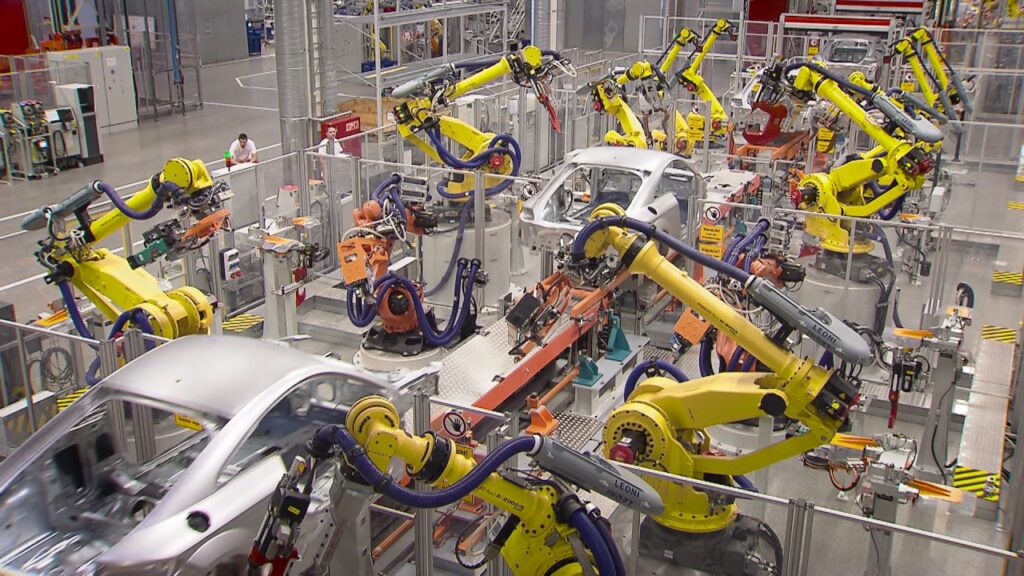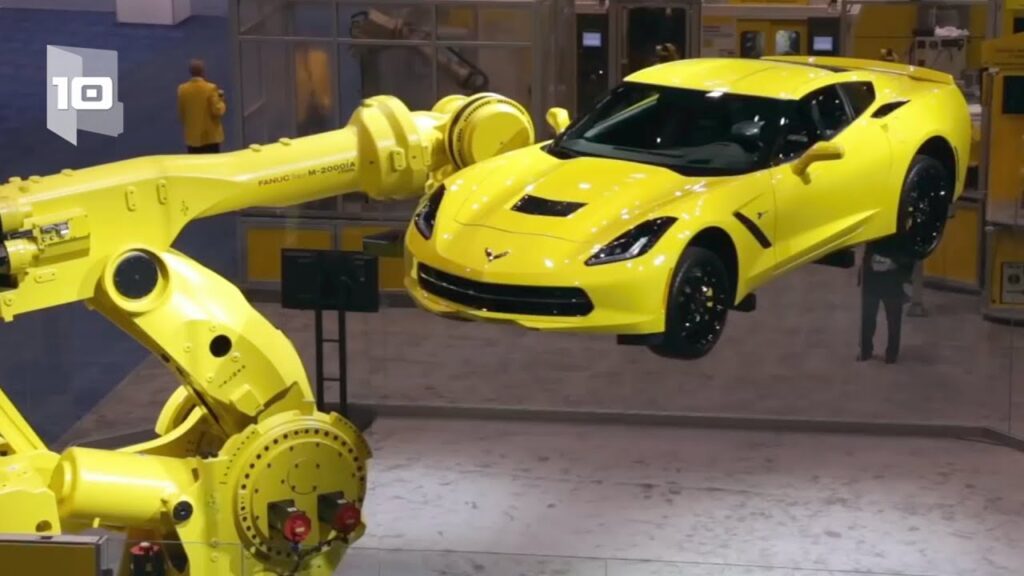Industrial robots have long been a revolutionary force in the field of automation, revolutionizing the way tasks are performed in various industries. These robots, powered by cutting-edge artificial intelligence (AI) technology, have the ability to perform complex tasks with precision and efficiency. In this article, we will explore the different types of industrial robots and their applications in various industries.
## The Types of Industrial Robots
Industrial robots can be classified into several types, each designed for specific tasks and industries. Let’s take a closer look at some of the most common types:
1. **Articulated Robots**: These robots have rotary joints, resembling a human arm. They are highly flexible and versatile, making them suitable for complex tasks that require a wide range of motion. Articulated robots are commonly used in industries such as automotive manufacturing, electronics, and assembly lines.
2. **SCARA Robots**: Standing for Selective Compliance Assembly Robot Arm, SCARA robots are known for their fast and precise movements. They are typically used for tasks that require high-speed and repeatable operations, such as pick-and-place tasks in the electronics industry and assembly operations.
3. **Cartesian Robots**: Also known as gantry robots, Cartesian robots operate on a three-axis linear system. They are ideal for tasks that involve straight-line movements, such as packaging, material handling, and assembly. Their simple design and high payload capacity make them a popular choice in a wide range of industries.
4. **Delta Robots**: Delta robots are characterized by their spider-like appearance, with three arms connected to a central base. These robots excel in tasks that require fast and precise movements, making them suitable for tasks such as pick-and-place operations, packaging, and sorting in industries like food and beverage, pharmaceuticals, and electronics.
5. **Collaborative Robots**: Also known as cobots, collaborative robots are designed to work alongside humans safely. These robots are equipped with advanced sensors and AI algorithms that enable them to interact and collaborate with human workers effectively. Collaboration robots find applications in industries such as manufacturing, logistics, and healthcare.
6. **Mobile Robots**: As the name suggests, mobile robots are capable of autonomous movement. They can navigate in dynamic environments using sensors and advanced algorithms. Mobile robots are widely used in industries such as warehousing, logistics, and agriculture for tasks like material transportation and inventory management.
These are just a few examples of the different types of industrial robots available today. Each type has its unique set of capabilities and is tailored to specific industries and tasks.
## The Future of Industrial Robots and AI
With advancements in AI technology, industrial robots are becoming smarter, more efficient, and more autonomous. This opens up a whole new realm of possibilities for industries. In the near future, we can expect to see even more advanced AI robots with enhanced capabilities.
According to a recent report by Simplilearn on the Top 10 AI Robots in 2023, some notable advancements are expected to hit the market. Here are a few robots on the list that are anticipated to shape the future:
1. **Boston Dynamics’ Spot**: Spot is a versatile four-legged robot capable of navigating uneven terrains and performing various tasks. It has gained popularity in industries such as construction, oil and gas, and public safety.
2. **ABB’s YuMi**: YuMi is a collaborative robot designed to work side-by-side with humans. It has advanced gripping capabilities, making it suitable for intricate assembly tasks in industries like electronics and small parts manufacturing.
3. **KUKA’s iiwa**: iiwa is a lightweight collaborative robot with sensitive sensors and force control. It is used for tasks that require precise force applications, such as assembly and testing.
4. **Universal Robots’ UR10**: UR10 is a highly flexible collaborative robot that can be easily integrated into various applications. Its ease of use and versatility have made it popular in industries like automotive, logistics, and electronics.
5. **Fanuc’s LR Mate 200**: LR Mate 200 is a compact and high-speed robot designed for small part assembly, material handling, and machine tending tasks. It is known for its precision and reliability.
These advanced AI robots, along with many others, are expected to revolutionize industries and drive automation to new heights.
In conclusion, industrial robots powered by AI technology have transformed the way tasks are performed in various industries. From articulated robots to collaborative cobots, each type serves a specific purpose and brings immense efficiency to the production process. As we look towards the future, it is evident that AI robots will continue to evolve, offering even more advanced capabilities and expanding their presence in industries worldwide. The synergy between AI and industrial robots holds tremendous potential, making it an exciting time for automation and technological advancements.
Industrial Robot
“Revolutionary AI Robots Unveiled: Uncover the Futuristic World of Artificial Intelligence and Explore the Diverse Types of Industrial Robots”


